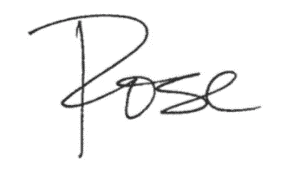Let’s face it: with the pace of work today, it is often easier to fix problems yourself than to empower others to do so. While this approach makes sense in emergencies, it often interferes with the key role of leaders: growing the skills, mindset, creativity, and autonomy of our teams. A huge body of research shows that empowering, rather than fixing, is a far more effective and sustainable strategy for fostering innovation, building trust, and developing high-performing teams.
It’s hard for experienced leaders not to default to fixing because we excel at it. But it is an impulse we must learn to regulate and manage. Fixing offers short-term wins; however, in the long term, it disempowers teams and team members by undermining their confidence and decision-making capacity.
Of course I’m not talking about relinquishing control; it’s about sharing it strategically. Again, the research spells it out: employees who feel empowered are 2.5 times more engaged, are more accountable, demonstrate higher ownership over their roles, are more creative problem-solvers, and have more robust innovation pipelines.
So, how do you make the shift from fixing to empowering? In my Evolved Leadership™ model, I offer four quick tips:
1. Question, question, question
Encourage your team to find their own solutions by asking open-ended questions. For example, instead of saying, “Here’s what you should do,” ask, “What do you think is the best approach? Why?” This not only allows you to guide but also fosters critical thinking and builds confidence.
2. Delegate Outcomes, Not Tasks
Assign responsibility for entire projects rather than individual tasks. Clarify the desired outcomes and give your team the autonomy to determine how to achieve them. By doing so, you open up the possibility for diverse and innovative thinking, perhaps even better than yours.
3. Normalize Mistakes as Learning Opportunities
Create a safe environment for failing. This means that when mistakes happen, focus on learning from them rather than assigning blame. Amy Edmondson from Harvard Business School is a great promoter of this mindset which fosters cultures of growth, resilience and innovation.
4. Model The Behavior
Trust is built when you ask for help, not when you just give help. Demonstrate trust by actively seeking input from your team and acting on their recommendations. This not only validates their contributions but also encourages them to take ownership of their work.
Empowering leadership is not just good for our teams – it’s essential for organizational success. By consciously shifting our mindsets from fixing to empowering, we cultivate a team capable of and confident in navigating challenges independently. After all, leadership impact is just as much about developing other leaders as it is about problem-solving.
So, the next time you feel the urge to step in and fix, pause. Ask yourself: “How can I empower my team to handle this instead?” The answer will not only elevate your leadership but also transform your organization.
As always, let me know your thoughts. And if you want to talk about the ways we can work together, I have a few coaching slots opening up, so please reach out!
Best,

